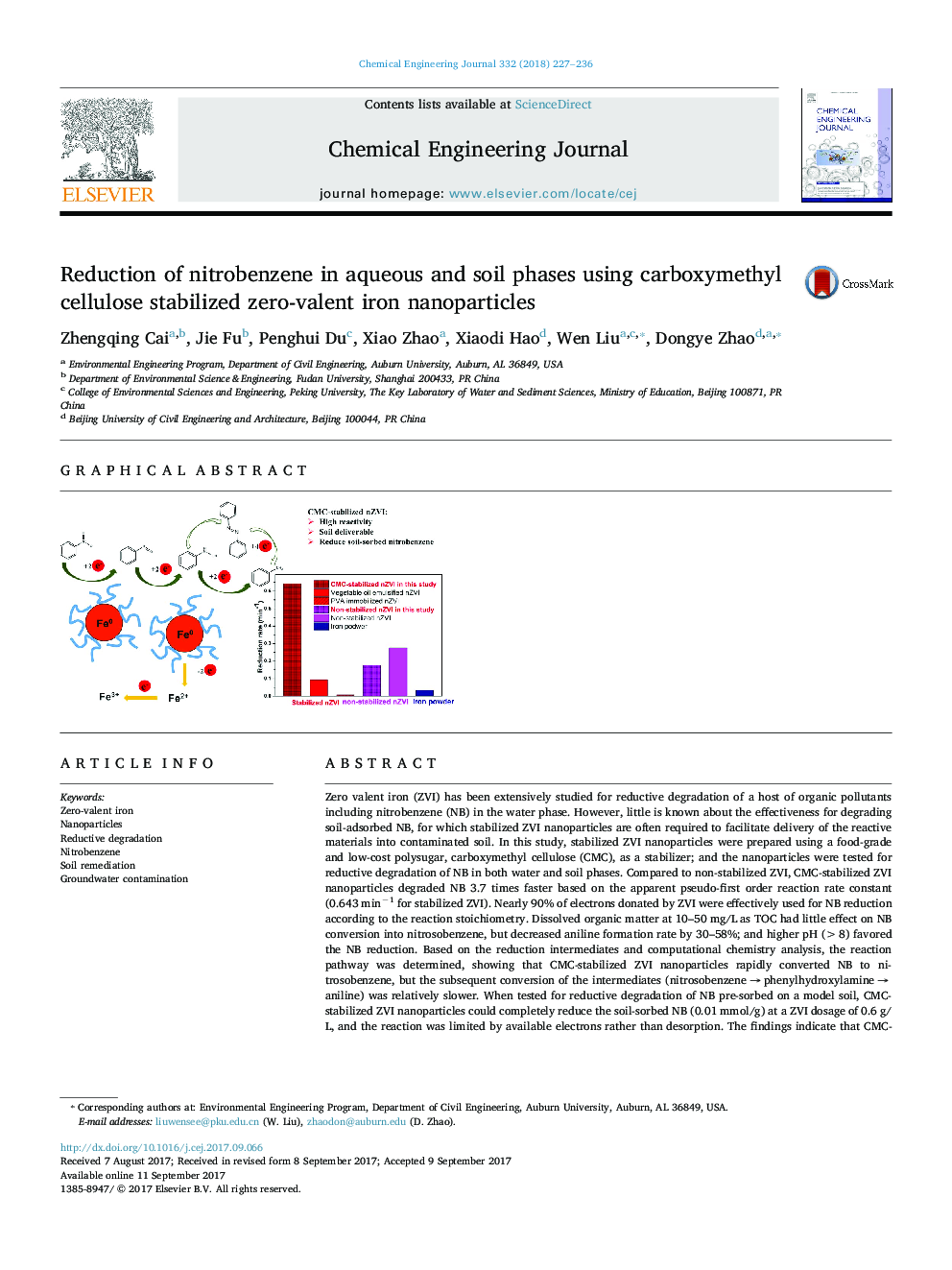| Article ID | Journal | Published Year | Pages | File Type |
|---|---|---|---|---|
| 6464872 | Chemical Engineering Journal | 2018 | 10 Pages |
â¢CMC-stabilized ZVI nanoparticles degrade NB 3.7 times faster than bare ZVIs.â¢Stabilized ZVI nanoparticles are most effective in converting NB into nitrosobenzene.â¢DOM at high concentrations (>10 mg/L) mainly inhibits conversion of intermediates.â¢Higher pH favors NB reduction due to much reduced precipitation of iron (hydr)oxides.â¢Stabilized ZVI can completely degrade soil-sorbed NB despite sorption hysteresis.
Zero valent iron (ZVI) has been extensively studied for reductive degradation of a host of organic pollutants including nitrobenzene (NB) in the water phase. However, little is known about the effectiveness for degrading soil-adsorbed NB, for which stabilized ZVI nanoparticles are often required to facilitate delivery of the reactive materials into contaminated soil. In this study, stabilized ZVI nanoparticles were prepared using a food-grade and low-cost polysugar, carboxymethyl cellulose (CMC), as a stabilizer; and the nanoparticles were tested for reductive degradation of NB in both water and soil phases. Compared to non-stabilized ZVI, CMC-stabilized ZVI nanoparticles degraded NB 3.7 times faster based on the apparent pseudo-first order reaction rate constant (0.643 minâ1 for stabilized ZVI). Nearly 90% of electrons donated by ZVI were effectively used for NB reduction according to the reaction stoichiometry. Dissolved organic matter at 10-50 mg/L as TOC had little effect on NB conversion into nitrosobenzene, but decreased aniline formation rate by 30-58%; and higher pH (>8) favored the NB reduction. Based on the reduction intermediates and computational chemistry analysis, the reaction pathway was determined, showing that CMC-stabilized ZVI nanoparticles rapidly converted NB to nitrosobenzene, but the subsequent conversion of the intermediates (nitrosobenzene â phenylhydroxylamine â aniline) was relatively slower. When tested for reductive degradation of NB pre-sorbed on a model soil, CMC-stabilized ZVI nanoparticles could completely reduce the soil-sorbed NB (0.01 mmol/g) at a ZVI dosage of 0.6 g/L, and the reaction was limited by available electrons rather than desorption. The findings indicate that CMC-stabilized ZVI nanoparticles hold the potential to facilitate in-situ remediation of NB-contaminated soil and groundwater.
Graphical abstractDownload high-res image (190KB)Download full-size image
